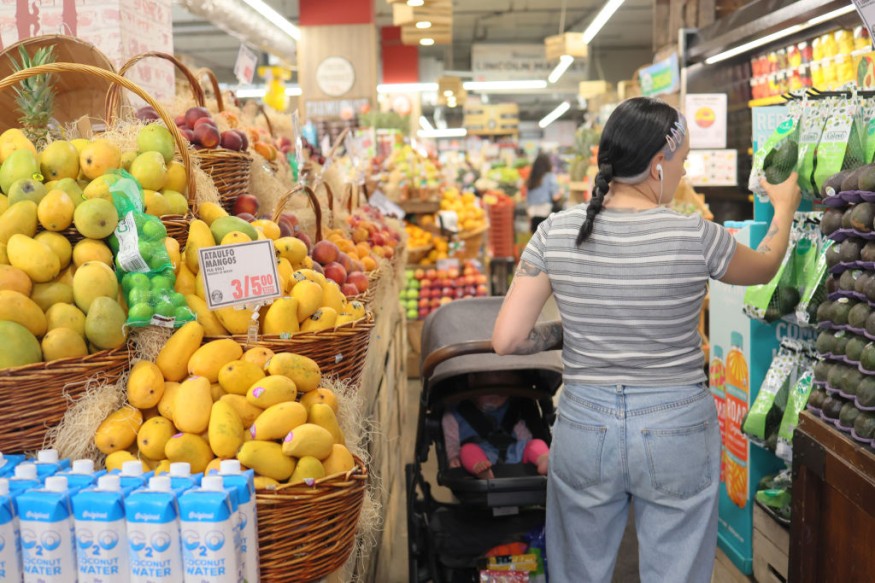Inflation Eases as Supply Chains Smooth, Workforce Expands and Housing Market Cools
Long beyond its unpleasant peak, inflation in the United States may be slowly returning to pre-pandemic levels, without the need for further Federal Reserve interest rate rises.
After Tuesday's relatively moderate consumer price report for October, such a scenario became more possible, although not definite. According to Labor Department data, inflation has been broadly dropping across most goods and services.

Overall inflation did not climb from September to October, marking the first time in more than a year that consumer prices did not rise from one month to the next. Prices climbed 3.2 percent year on year in October, the lowest increase since June but still above the Fed's 2 percent inflation objective.
Excluding volatile food and energy costs, core inflation was 0.2 percent last month, a tad slower than the previous two months.
Economists pay particular attention to core prices, which are regarded to be a reliable indicator of inflation's likely future course. Core prices grew 4 percent year on year in October, down from 4.1 percent in September, the weakest increase in two years.
A significant contributor has been an increase in the availability of numerous items, including workers, housing, and components for manufactured goods.
Labor Market Dynamics in the Last Year
Millions of Americans have returned to the labor field in the last year, seeking and (for the most part) finding work.
Immigration has also grown, as have the number of individuals searching for job. Because there are more available workers, businesses haven't had to boost pay as much to fill jobs, alleviating the pressure on those businesses to raise their pricing.
Read also: New Report Finds China's Development Banks Are Lagging Behind on Green Energy Finance
Impact of New Apartment Construction on Rental Prices
At the same time, the most new apartment complexes have been erected in decades, which is helping to restrain rent hikes. Rental expenses, following a jump in September, climbed at a far more modest pace last month.
Rents and other housing prices are expected to continue falling, according to experts, as the cost of new leases continues to reduce, according to real-time data sources like Zillow. Lower prices are reflected in official statistics with a lag.
Impact of Supply Chain Stabilization on Pricing and Consumer Spending
And the supply systems that were severely disrupted during the outbreak have mostly unwound. Product, part, and component availability helps keep pricing under control. Automobile manufacturers, for example, are finding it much simpler to source semiconductors.
As a consequence, new car prices fell last month, despite expectations that the now-resolved autoworkers' strike would cut dealer inventory and drive up costs. Used automobile costs are also falling. They decreased for the seventh month in a row in October and are down 7% from a year ago.
Separately, after a wild summer, consumers are largely anticipated to cut back on spending, with credit card debts - and delinquencies - increasing and average savings declining. Lower demand should encourage firms to compete on pricing more aggressively.
Gas prices have continued to plummet this month, with the national average at the pump hitting $3.35 on Tuesday, down 42 cents from a year ago. These price decreases might drive year-over-year inflation below 3 percent by December.
Inflation remains painfully visible in many locations. They include vehicle and health insurance, as well as some foodstuffs such as meat and bread.
The average cost of vehicle insurance has risen over 20 percent from a year ago, up 1.9 percent from September to October. As the cost of new and used automobiles has risen, so has the cost of insurance. In addition, health insurance costs increased 1.1 percent last month, owing partly to a change in the government's approach.
However, just because overall price rises are slowing does not indicate that inflation is reversing or that most prices are returning to pre-pandemic levels. The consumer price index, the most frequently used indicator of inflation, is still almost 20 percent higher than it was before to the epidemic.
Milk prices have fallen slightly in the last year, but they are still 23 percent higher than they were before the outbreak. Prices for ground beef have risen by 31 percent. Despite a sharp drop from a year ago, gas costs are still 46 percent higher than before the outbreak.
Many economists believe that despite relatively low unemployment and consistent hiring, one of the primary reasons why so many Americans are pessimistic about the economy is because prices of products they buy on a regular basis remain significantly higher than they were three years ago.
Related article: US Treasure Secretary Yellen Urges APEC Finance Ministers to Embrace Sustainable Growth Strategies
Copyright © MoneyTimes.com












